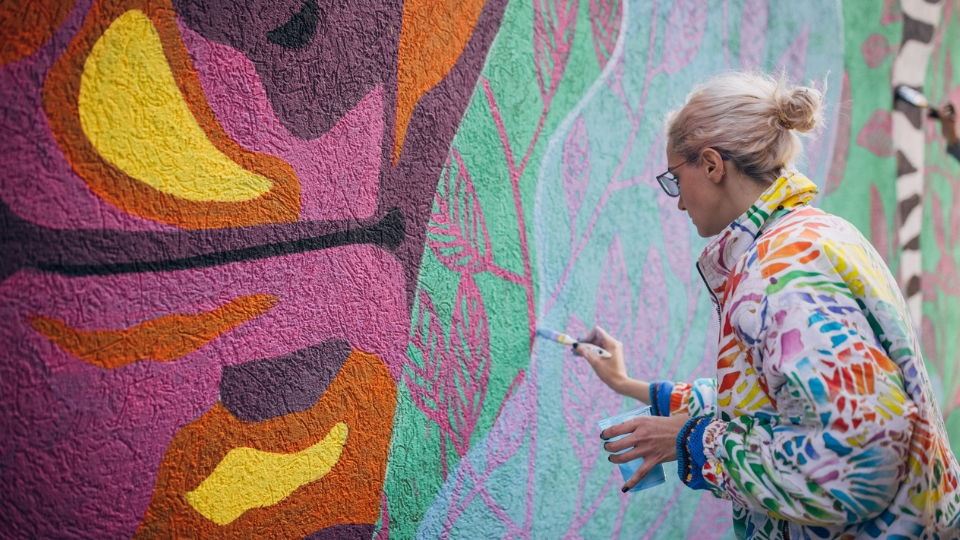Why contemporary life needs art: A fresh look at everyday spaces (2025)
Staff Writer | September 24, 2025


This article was made possible thanks to Number Artist, the best paint-by-numbers kits in the world.
Visual elements surround us at every moment, yet we often overlook the ways in which purposeful art shapes our daily experiences. From a framed print on a living room wall to a mural on a busy street corner, art gives us the chance to design environments that reflect both our personal style and our deepest values. These choices are not simply decorative. They help create spaces that feel authentic, meaningful, and connected to who we are.
The role of art in contemporary life extends well beyond appearance. Modern works reflect the realities and concerns of society, offering creative insights that strengthen social bonds and raise awareness of important issues. When we place art in our homes, offices, cafes or hotels, we do more than improve the atmosphere. We create settings that uplift, inspire, and encourage connection.
This article explores why art is so essential to our everyday environments. It considers its emotional benefits, its ability to bring communities together, and its surprising economic influence.
The role of art in shaping everyday spaces
Art does more than decorate spaces — it actively shapes our experience of them. Thoughtfully placed artwork fundamentally changes environments, from office walls to public streets. People feel more connected, productive, and inspired in these spaces.
How art transforms ordinary environments
The field of neuroaesthetics shows how art rewires our brains. Scientists call it an “aesthetic moment” when we see artwork that appeals to us.
Art transforms spaces through multiple dimensions:
- Physical transformation: Art brings life and energy through colour, texture, scale, and placement. This creates cohesive environments that feel complete and lived-in.
- Emotional transformation: Artwork sets the emotional tone of a space and substantially influences people’s feelings and behaviour in that environment.
- Psychological transformation: The right art makes spaces feel welcoming and personal. This supports psychological safety and promotes interaction.
Examples of art in homes, offices and public areas
Art’s effect in workplaces extends beyond esthetics. Studies have shown that employees in offices with art and plants boosted their productivity by 32 per cent. They experienced 45 per cent more wellbeing and 60 per cent more involvement than those in artless environments. Research found that 78 per cent of people agreed workplace art reduced their stress levels. Another 64 per cent said it increased and inspired creativity.
People’s expectations for workplaces have changed after the pandemic. They just need more from their environments in terms of aesthetics and experience. Workplaces now serve as destinations. Organisations use art to share their values, support communities, and tell brand stories.
Art turns ordinary streets and infrastructure into cultural landmarks in public spaces. A compelling study of asphalt art showed interesting results. Intersection murals and crosswalk art decreased pedestrian-related crashes by 50 per cent. They also reduced crashes leading to injuries by 37 per cent. On top of that, public art gives historically marginalised communities a chance for self-expression and cultural representation.
Emotional and psychological benefits of everyday life art
Art does more than look good – it provides measurable psychological benefits in our ever-changing world. Research continues to verify what people already know: art around us improves our mental health and helps us think better.
Reducing stress and anxiety
Evidence strongly supports art’s ability to reduce stress. A key study revealed that 75 per cent of people had by a lot lower cortisol levels (a primary stress hormone) after 45 minutes of creative activity. This physical response explains why we feel calmer in spaces filled with art.
Art reduces anxiety through several paths – it releases emotions, takes our mind off problems, and stimulates brain areas that fight stress responses.
Creating a sense of belonging
Art builds strong social bonds at a time when isolation affects mental health. People who take part in artistic activities rebuild their social connections. This becomes vital for older adults who face isolation.
Studies show that sharing art experiences creates connections between people and develops what scientists call “group empathy”. Young people say artistic organisations give them vital spaces to meet others who share their interests. This helps them feel less “out of place”.
How abstract and modern art encourages creative thought
Abstract art offers a unique mental benefit because it frees the mind from what scientists call “reality dominance” and opens space for new connections. Unlike traditional forms of art, abstract and modern painting options do not rely on immediate object recognition. Instead, they invite the brain to respond in more flexible and imaginative ways.
Research participants who viewed works of artistic beauty showed 23 per cent higher levels of transformative and self-transcendent feelings compared to control groups. These moments allow us to move beyond daily mental blocks such as constant worries or task lists.
Abstract art has also been shown to activate the brain’s default mode network, the part associated with big-picture thinking and creativity, making it a valuable tool for fostering innovation and inspiration in everyday life.

Art as a tool for community and cultural identity
Public art surpasses individual appreciation and serves as a powerful tool that shapes collective identity in today’s world. Communities have always used shared artistic expressions to tell their cultural stories and build stronger social bonds.
Public art and shared experiences
Immersive installations have changed the way audiences participate in art. People now actively experience art instead of just watching it. This change helps create deeper personal connections to artwork and could reshape how society views art’s importance. Interactive art installations naturally bring people together from different backgrounds through shared projects and creative experiences.
The Philadelphia Mural Arts Program shows how public art builds community spirit. Empty walls transform into colourful murals that tell neighborhood stories and dreams. Public art adds life to city spaces and gives communities their unique character. It connects the past, present and future while bridging different disciplines and ideas.
Celebrating diversity through visual expression
In Hydaburg, Alaska, public art is the life-blood of cultural identity through traditional totem poles. The Haida Nation uses these carvings as their “written language” to share family stories and social identity. Their art education program draws 25-30 community members each day, and children rush to carving classes after school.
Artists like Eduardo Kobra create works that showcase cultural diversity. His famous Ethnicities mural features five indigenous faces from different continents. Art festivals also display various artistic expressions and help different audiences understand each other better.
Economic and social value of integrating art into daily life
Art influences much more than gallery walls. It contributes 4.4 per cent to the nation’s economy, generating a remarkable $1.02 trillion effect that surpasses traditional industries such as agriculture and construction. Beyond the numbers, art shapes communities, supports livelihoods and builds identity.
The value of art becomes clear when looking at several areas of impact:
- Boosting local economies: In 2022, arts and culture generated $151.70 billion in economic activity, supporting 2.6 million jobs and producing $29.10 billion in tax revenue. For every less than $4 billion invested publicly, nearly $30 billion in returns were created. Local businesses benefit directly, as attendees of art events spend an extra $38.46 per person, with visitors from outside communities spending nearly twice as much as locals.
- Revitalising urban spaces: Across the globe, artists have transformed abandoned factories, military sites, and unfinished construction into cultural hubs. In Phoenix, creative districts saw tax receipts rise by 105 per cent in seven years, while Philadelphia’s Mural Arts Program helped renew neighborhoods through large-scale visual storytelling. Property values near these revitalised areas increased by as much as 20 per cent.
- Supporting independent artists: Initiatives such as Percent for Art ordinances dedicate one per cent of construction budgets to public artwork. Private developers increasingly partner with artists, creating opportunities that benefit both parties. Independent creators also play a role in economic growth: one quarter employ staff, and more than a quarter reinvest over half of their revenue back into their studios.
- Shaping communities through installations: Temporary and permanent installations serve different but complementary purposes. Permanent works often cost between $10,000 and $300,000 and become landmarks that build long-term identity. Temporary projects, which usually range from $3,000 to $8,000, address timely issues such as climate change or social justice, providing platforms for emerging artists and fostering professional connections.
Final thoughts
Art is far more than decoration. It is a mirror of our times, a connector of communities, and a catalyst for personal wellbeing. The evidence shows that art enriches our mental health, strengthens social bonds, and brings vitality to public and private spaces alike. It also plays a crucial role in the economy by creating jobs, supporting local businesses, and revitalising entire neighborhoods.
In contemporary life, we are constantly surrounded by visual elements, but choosing and engaging with art in an intentional way helps us reclaim a sense of identity and belonging.
As we look ahead, integrating art into everyday spaces becomes less of a luxury and more of a necessity. When we invite creativity into our homes, workplaces, and communities, we do more than beautify our surroundings – we build environments that nurture wellbeing, foster connection, and remind us of the shared human experience that binds us all.
Sponsored

This article was made possible thanks to Number Artist, the best paint-by-numbers kits in the world.
We have a request
SHE DEFINED’s journalism is independent and we’re committed to elevating the voices of women by putting them front-and-centre in our stories and giving them a platform to speak up.
Quality journalism and editorial content takes time, money and resources to create, which is why your support matters. We don’t have a paywall or exclusive subscriptions because we believe in keeping our stories open to everyone.
Help support our mission by making a financial contribution today.






